Imagine standing in complete darkness, deep within an ancient stone chamber, when suddenly a single shaft of sunlight pierces through the gloom, illuminating the corridor with golden light. This isn’t just any light — it’s the winter solstice sunrise, and it has been happening at the exact same moment for over 5,000 years. Welcome to Newgrange, where our ancestors created one of the world’s most sophisticated astronomical monuments, older than Stonehenge and the Great Pyramid of Giza.
The Monument That Predates History
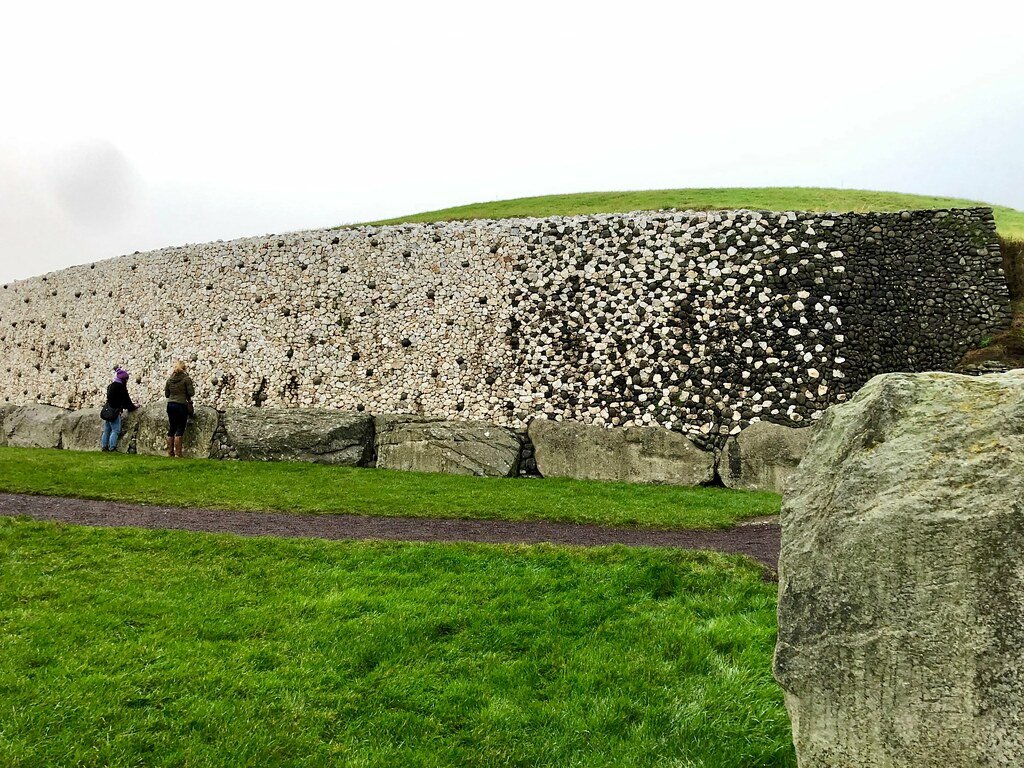
Newgrange stands as a testament to human ingenuity from a time when bronze hadn’t even been invented. Built around 3200 BCE during the Neolithic period, this massive passage tomb required an estimated 200,000 tons of stone and earth. The builders transported massive stones from quarries over 75 kilometers away, demonstrating organizational skills that challenge our assumptions about prehistoric societies.
What makes Newgrange extraordinary isn’t just its age, but its precision. The monument covers approximately one acre and stands 13 meters high, with a diameter of 85 meters. Its white quartz facade would have gleamed like a beacon across the Boyne Valley landscape.
The construction required not only physical labor but sophisticated mathematical and astronomical knowledge. Every stone was placed with purpose, every angle calculated to achieve something remarkable — a perfect solar alignment that continues to function flawlessly after five millennia.
The Winter Solstice Miracle

For seventeen minutes each December 21st, sunlight streams through a specially designed roof-box above the entrance, travels down the 19-meter passage, and illuminates the inner chamber. This phenomenon happens only during the winter solstice, marking the shortest day of the year when light begins its return to the world.
The roof-box itself is an engineering marvel — a small rectangular opening precisely positioned to capture the low-angled winter sun. The accuracy required for this alignment demonstrates astronomical knowledge that rivals modern capabilities. Think of it as an ancient observatory built from stone rather than steel and glass.
Witnessing this event today requires winning a lottery, as only 20 people can fit inside the chamber. The waiting list stretches over a decade, testament to the enduring power of this ancient spectacle. Those fortunate enough to experience it describe an overwhelming sense of connection to our ancestors and the cosmos itself.
Architecture That Defies Time

The corbelled ceiling of Newgrange’s inner chamber represents one of the finest examples of dry-stone construction in Europe. Without mortar or modern tools, the builders created a dome that has remained watertight for over 5,000 years. Each stone was carefully selected and shaped to bear the immense weight above while allowing no water penetration.
The passage itself demonstrates remarkable engineering precision. Its floor rises gradually toward the chamber, ensuring proper drainage, while the walls maintain exact measurements necessary for the solar alignment. The builders understood principles of load distribution, water management, and astronomical calculation.
Modern architects study Newgrange to understand how ancient builders achieved such durability. The structure has survived ice ages, floods, and human interference, standing as solid today as when it was completed. This longevity surpasses many contemporary buildings, revealing construction techniques we’re only beginning to appreciate.
The Megalithic Art Gallery
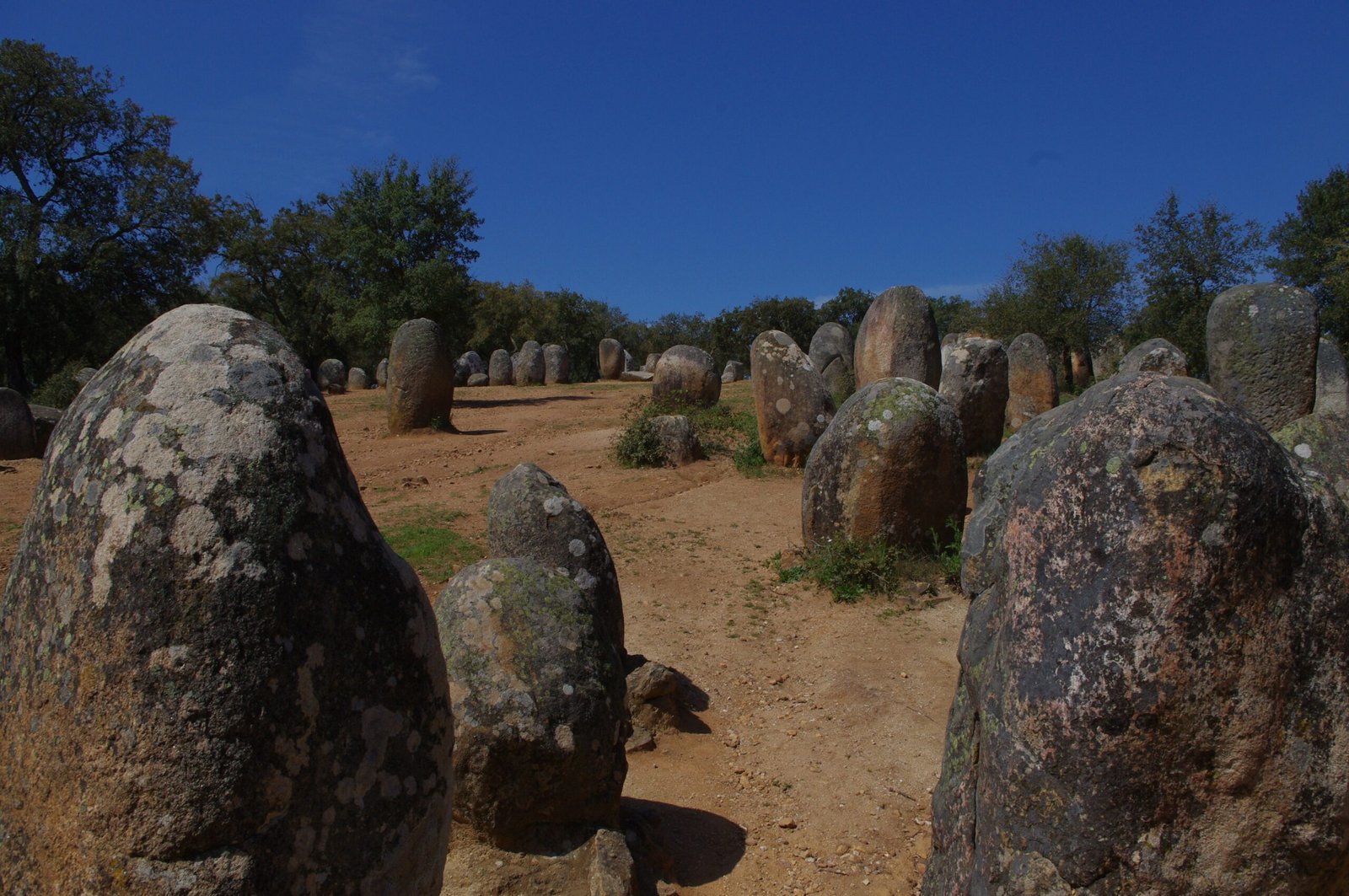
Newgrange contains one of Europe’s richest collections of megalithic art, with intricate carvings covering kerb stones, orthostats, and chamber walls. The most famous motif is the triple spiral carved on the entrance stone, a symbol that appears throughout ancient Celtic culture and may represent the three realms of land, sea, and sky.
These aren’t random decorations but appear to be a sophisticated symbolic language. Spirals, zigzags, circles, and diamond patterns cover the stones, created by pecking and grinding techniques that required enormous patience and skill. Some researchers believe these patterns map astronomical cycles or encode mathematical relationships.
The artworks show remarkable consistency in style and execution, suggesting a unified artistic vision or perhaps a standardized symbolic system. Unlike cave paintings found elsewhere, these carvings were meant to be seen and touched, creating an interactive experience between the monument and its visitors.
Who Were the Builders?

The people who built Newgrange lived in farming communities along the fertile Boyne Valley, cultivating crops and raising livestock. They weren’t the primitive hunter-gatherers often depicted in popular imagination, but sophisticated society with complex social structures, trade networks, and specialized craftspeople.
Archaeological evidence suggests a hierarchical society with powerful leaders capable of organizing massive construction projects. The effort required to build Newgrange would have demanded cooperation from multiple communities, indicating political unity and shared religious beliefs across the region.
These Neolithic farmers possessed advanced knowledge of astronomy, mathematics, and engineering. They understood seasonal cycles crucial for agriculture and created monuments that celebrated the sun’s return during the darkest days of winter. Their legacy challenges assumptions about prehistoric capabilities and intelligence.
The Boyne Valley Complex

Newgrange doesn’t stand alone but forms part of the Brú na Bóinne complex, which includes two other major passage tombs: Knowth and Dowth. Together, these monuments create what archaeologists call a “sacred landscape” — a coordinated ritual center that served the wider community for generations.
Knowth, the largest of the three, contains two passage tombs and over 300 decorated stones, representing the greatest collection of megalithic art in Europe. Dowth, though partially damaged, shows similar construction techniques and astronomical alignments. The three sites together demonstrate unprecedented planning and coordination.
Smaller satellite tombs dot the landscape around these major monuments, creating a complex that rivals any ancient ceremonial center worldwide. The entire area spans several square kilometers and represents one of humanity’s earliest attempts at landscape architecture on a monumental scale.
Mysteries of Construction Techniques

Moving the massive stones used in Newgrange’s construction presents puzzles that archaeologists continue studying. The largest kerb stones weigh several tons each, while countless smaller stones had to be precisely positioned. Without wheels, pulleys, or draft animals, the builders relied on human ingenuity and cooperation.
Recent experiments suggest they used wooden rollers, ramps, and lever systems to move stones. The white quartz facade required importing approximately 200,000 individual stones from the Wicklow Mountains, 80 kilometers south. This represents one of the earliest large-scale transportation projects in human history.
The precision of the solar alignment required not only moving massive stones but positioning them with astronomical accuracy. The margin of error for the roof-box alignment is less than one degree, suggesting the builders possessed sophisticated surveying techniques and mathematical understanding we’re only beginning to appreciate.
Sacred Geometry and Mathematical Precision
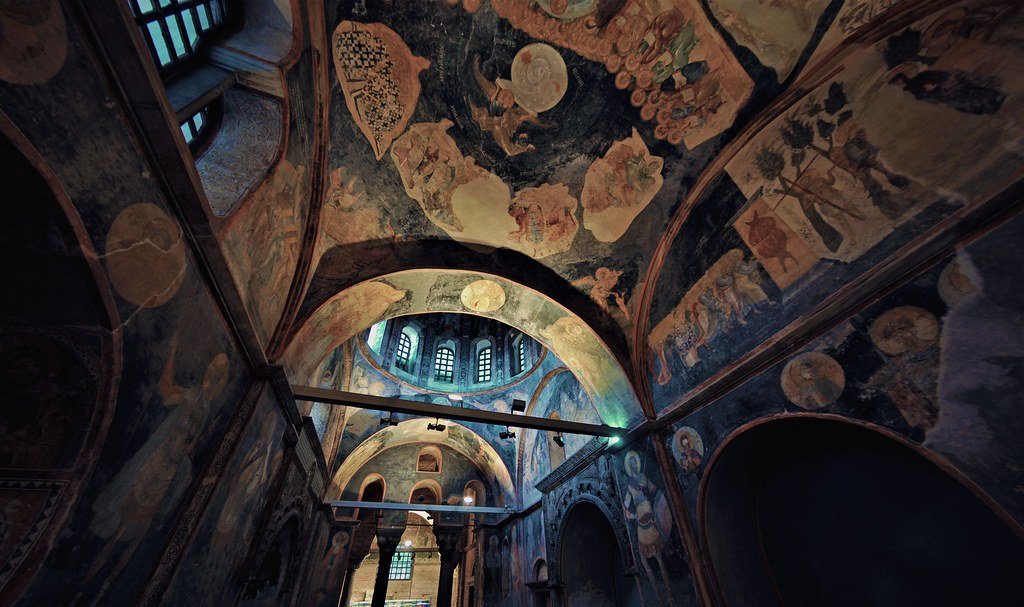
Analysis of Newgrange reveals sophisticated mathematical relationships throughout its design. The monument’s circular plan follows precise geometric principles, with the passage length relating to the overall diameter through specific ratios. These relationships suggest knowledge of mathematical concepts traditionally attributed to later civilizations.
The megalithic yard, a unit of measurement approximately 2.72 feet long, appears consistently throughout Newgrange and other Neolithic monuments across Europe. This standardization implies widespread communication and shared knowledge among prehistoric communities separated by vast distances.
The builders incorporated multiple mathematical relationships into the structure, from the golden ratio to lunar and solar cycles. These weren’t accidental but represent deliberate applications of geometric principles to create a monument that functions as both tomb and astronomical instrument.
The Ritual Landscape
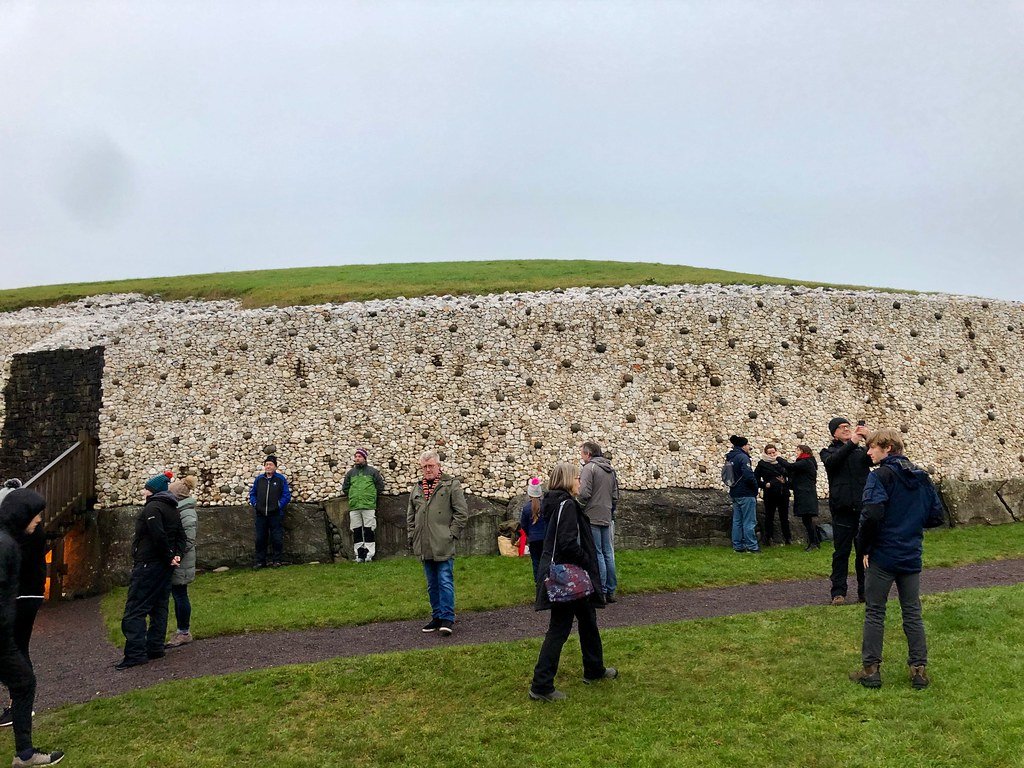
Newgrange wasn’t simply a tomb but served as the centerpiece of elaborate ritual activities that connected the living with their ancestors and the cosmos. The winter solstice ceremony likely involved processions, offerings, and ceremonies that reinforced community bonds and seasonal cycles.
Evidence suggests ritualistic activities occurred throughout the year, not just during the solstice. The monument’s multiple chambers may have served different ceremonial purposes, while the surrounding landscape hosted gatherings, markets, and religious festivals that drew people from across Ireland and beyond.
The placement of cremated remains within the chamber indicates ancestor veneration, while the astronomical alignment connects earthly concerns with celestial cycles. This integration of death, rebirth, and cosmic rhythm reflects sophisticated religious beliefs that found expression through monumental architecture.
Rediscovery and Modern Archaeological Investigation
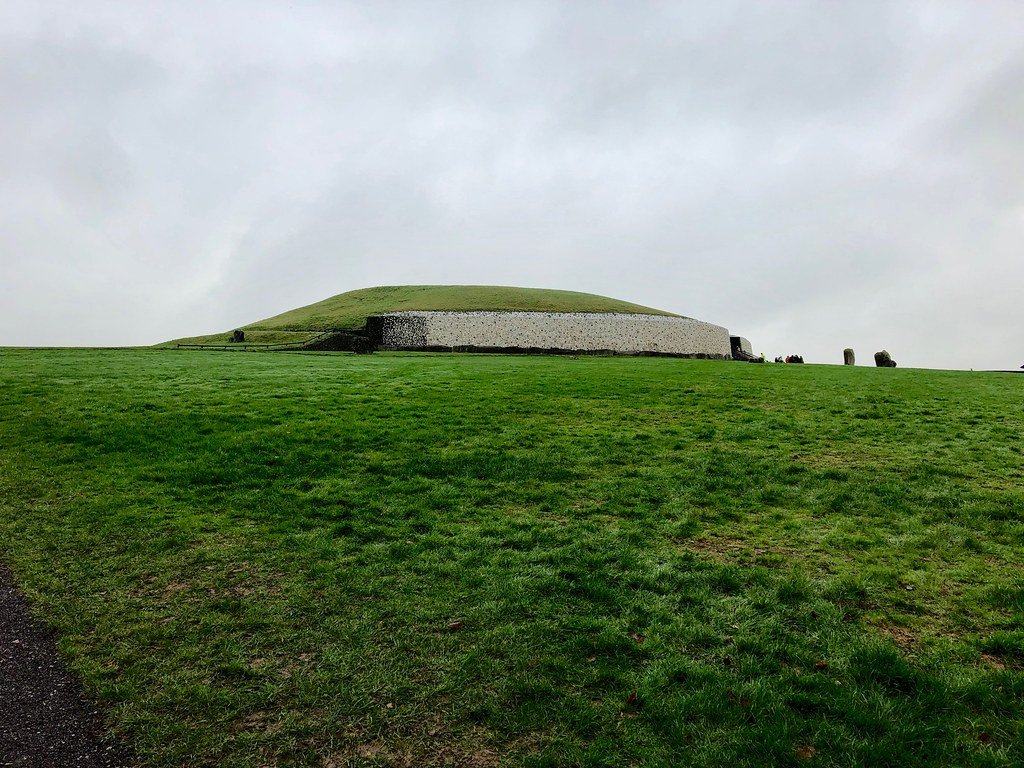
Newgrange remained hidden beneath centuries of accumulated earth and vegetation until antiquarian Charles Campbell began excavations in the late 17th century. Local folklore preserved memories of the site, referring to it as the “Cave of the Sun” and associating it with ancient kings and supernatural beings.
Serious archaeological investigation began in the 1960s under Professor Michael J. O’Kelly of University College Cork. O’Kelly’s team restored the monument’s white quartz facade and made the crucial discovery of the winter solstice phenomenon in 1967, when O’Kelly became the first person in centuries to witness the solstice illumination.
Modern techniques including ground-penetrating radar, laser scanning, and digital modeling continue revealing new insights about Newgrange’s construction and use. These investigations show the monument is even more complex than previously understood, with hidden chambers and undiscovered features still waiting to be explored.
The Ongoing Conservation Challenge

Preserving Newgrange presents unique challenges as thousands of visitors seek to experience this ancient wonder. The delicate balance between public access and monument protection requires constant vigilance and innovative solutions. Climate change poses additional threats through altered precipitation patterns and temperature fluctuations.
The white quartz facade, reconstructed in the 1970s based on archaeological evidence, requires ongoing maintenance to prevent weathering and erosion. Debates continue among archaeologists about restoration approaches, balancing historical accuracy with structural stability and visitor safety.
UNESCO World Heritage status, granted in 1993, provides international protection and funding for conservation efforts. However, the monument’s popularity continues growing, creating pressure for expanded access while maintaining the site’s integrity for future generations.
Scientific Revelations About Ancient Astronomy

Newgrange demonstrates that Neolithic peoples possessed sophisticated astronomical knowledge, tracking solar and lunar cycles with remarkable precision. The monument functions as a massive stone calendar, marking not only the winter solstice but potentially other significant astronomical events throughout the year.
Recent studies suggest the builders incorporated multiple astronomical alignments into the structure, including potential connections to lunar cycles and star positions. This knowledge enabled them to predict seasonal changes crucial for agricultural success and religious observance.
The precision of Newgrange’s solar alignment rivals modern observatories, achieved through careful observation and mathematical calculation. This challenges traditional narratives about prehistoric capabilities and suggests ancient peoples understood celestial mechanics in ways we’re only beginning to appreciate.
Comparisons to Other Ancient Monuments

Newgrange shares remarkable similarities with other ancient monuments worldwide, suggesting common human impulses to mark astronomical events through monumental architecture. Stonehenge, built 500 years later, incorporates similar solar alignments, while Egyptian pyramids demonstrate comparable mathematical precision and astronomical orientation.
The passage tomb tradition appears throughout Atlantic Europe, from Scotland’s Orkney Islands to Spain’s Iberian Peninsula. These monuments share construction techniques, artistic motifs, and astronomical alignments, indicating extensive prehistoric communication networks and shared cultural practices.
Unlike many ancient monuments built by hierarchical civilizations with vast resources, Newgrange represents achievement by relatively small farming communities. This makes its sophistication even more remarkable, demonstrating that monumental architecture wasn’t exclusive to great empires but emerged from human creativity and determination.
The Role of Women in Neolithic Society

Recent archaeological evidence suggests women played crucial roles in Neolithic society and possibly in Newgrange’s construction and use. Analysis of burial remains shows both men and women received elaborate interments, indicating relatively egalitarian social structures compared to later Bronze Age societies.
The monument’s association with fertility and renewal, symbolized by the winter solstice light penetrating the dark chamber, may reflect goddess worship or female-centered religious practices. Many megalithic art motifs resemble vulvar symbolism, suggesting connections to birth, death, and regeneration cycles.
Tools and artifacts found at Neolithic sites indicate women participated in specialized crafts including pottery, textile production, and possibly stone carving. The sophisticated planning required for Newgrange likely involved both male and female contributions to astronomical observation, mathematical calculation, and artistic creation.
Technology Meets Ancient Wisdom

Modern technology enables unprecedented exploration of Newgrange’s secrets without damaging the monument. Laser scanning creates precise three-dimensional models, while ground-penetrating radar reveals hidden structures and chambers. Virtual reality allows global audiences to experience the winter solstice phenomenon without physically entering the fragile chamber.
Digital modeling helps archaeologists understand construction sequences and identify original building techniques. Computer simulations test theories about how massive stones were moved and positioned, while astronomical software calculates ancient sky positions to verify alignment accuracy.
These technological tools complement traditional archaeological methods, creating comprehensive understanding of Newgrange’s construction, use, and significance. The combination of ancient wisdom and modern science reveals human achievements that continue inspiring awe and wonder 5,000 years after their creation.
Cultural Impact and Modern Significance

Newgrange profoundly influences Irish identity and cultural heritage, serving as a symbol of ancient wisdom and technological achievement. The monument appears on Irish coins, stamps, and official documents, while its triple spiral motif decorates everything from jewelry to corporate logos.
Contemporary spiritual movements draw inspiration from Newgrange’s astronomical alignments and ancient symbolism. Winter solstice celebrations at the site attract people seeking connection to ancestral traditions and natural cycles, creating modern rituals around ancient monuments.
The monument challenges European historical narratives that typically begin with Greek and Roman civilizations. Newgrange demonstrates sophisticated achievement by prehistoric peoples, forcing recognition of human accomplishment that predates written history and classical antiquity.
Future Research and Unanswered Questions
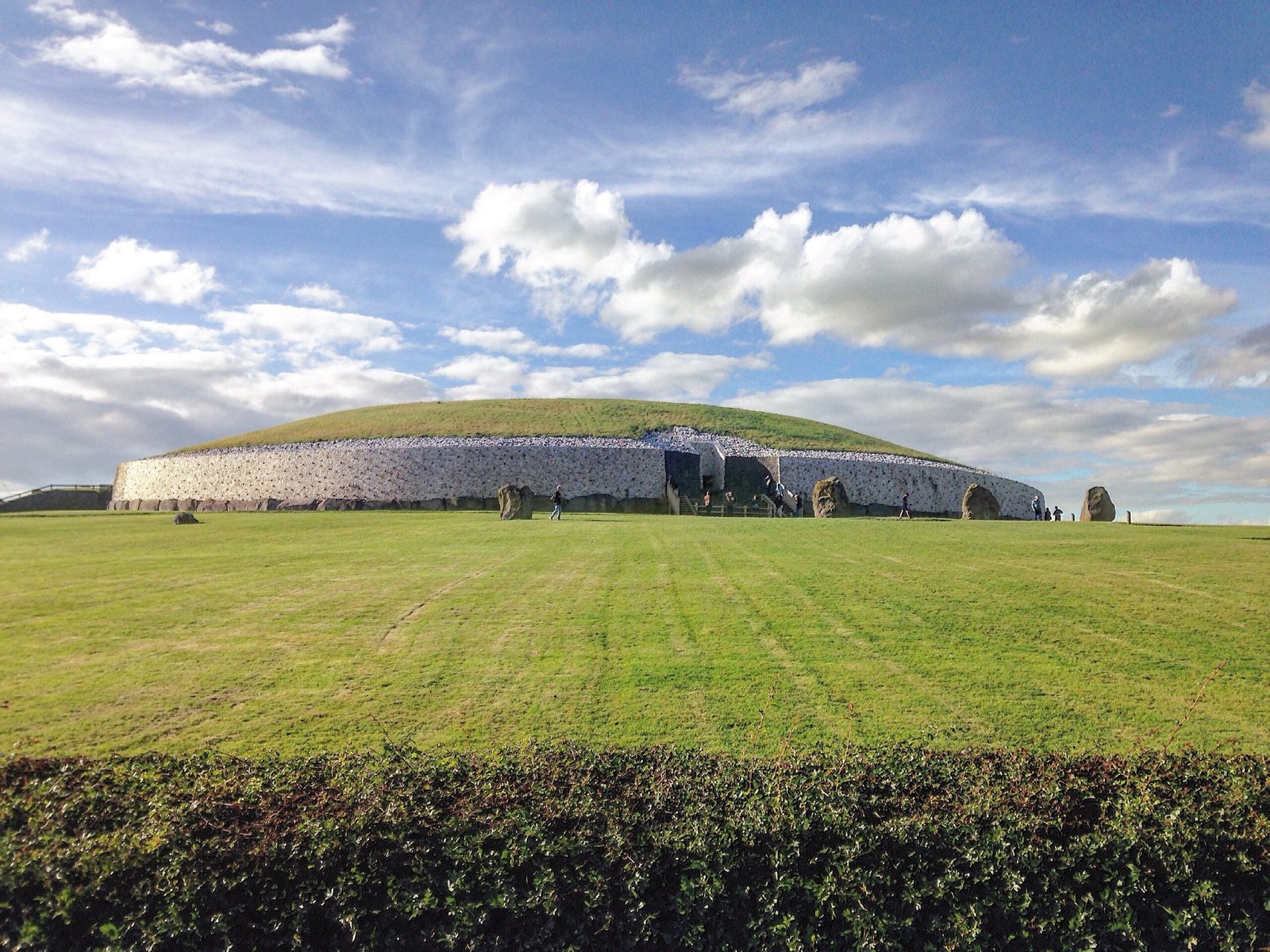
Many mysteries about Newgrange remain unsolved, driving continued research and investigation. Hidden chambers detected through ground-penetrating radar await exploration, while the full extent of astronomical alignments continues being studied. New analytical techniques may reveal additional functions and meanings embedded in the monument’s design.
The relationship between Newgrange and other European megalithic sites requires further investigation to understand prehistoric communication networks and cultural exchange. DNA analysis of burial remains may illuminate the genetic heritage and origins of the monument’s builders.
Climate data from the Neolithic period could explain why these monuments were built when they were, while ongoing conservation research develops better methods for preserving stone monuments in changing environmental conditions. Each discovery adds pieces to the puzzle of understanding our ancient ancestors and their remarkable achievements.
Newgrange stands as humanity’s earliest surviving masterpiece of astronomical architecture, proving that sophisticated knowledge and artistic vision existed long before recorded history. This 5,200-year-old monument challenges our assumptions about prehistoric capabilities while connecting us to ancestors who understood their place in the cosmos with remarkable precision. The builders of Newgrange left us more than stones and carvings — they gave us proof that human curiosity, creativity, and determination have driven extraordinary achievements throughout our species’ journey. What would those ancient astronomers think of our modern attempts to reach the stars they studied so carefully from their stone observatory?




